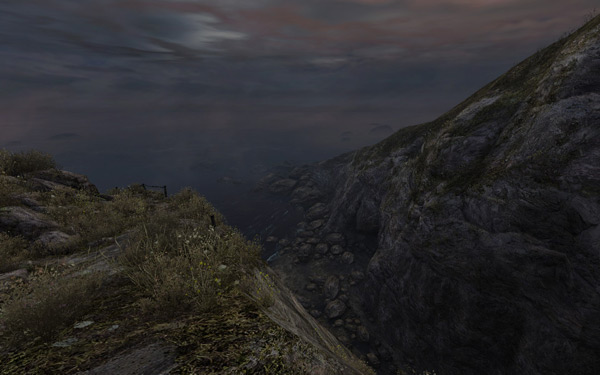Dear Esther
Dear Esther is a noble little experiment that pushes the notion of video games as art. The problem is, it isn’t much of a game. You walk around a beautifully rendered desolate island in first-person view. As you move along you are fed bits and pieces of a narrative involving a car accident and a woman named Esther. The story slowly comes together as you approach your goal but remains vague and feels unfinished even near at the very end. Again, this is not a game. Unlike the very similar (yet excellent) text adventure, Photopia (similar both thematically and game-aticly [yes, I made that up]), in Dear Esther there are no choices to be made and any exploration is limited to a couple of structures off to the side of the main path. You pretty much stick to that path and keep pushing forward. In Photopia the story becomes coherent, complete and satisfying at the end. Dear Esther – not so much.
Now all this isn’t to say that it isn’t a worthwhile hour or so of holding down the walk-forward key. The game is beautiful, and, even though at first I didn’t really get what was going on, the narration is very, how shall we say, “fancy” sounding and arty. Whenever someone tries to push the position that video games can be art they always seem to compare games with movies. I think this is a bad comparison. Video games have much, much more in common with site-specific and installation art. It isn’t so much about the scene-to-scene plot as it is about the immersion and exploration. In that context, Dear Esther is an admirable work of art that I’d recommend despite its non-gamey-ness.

